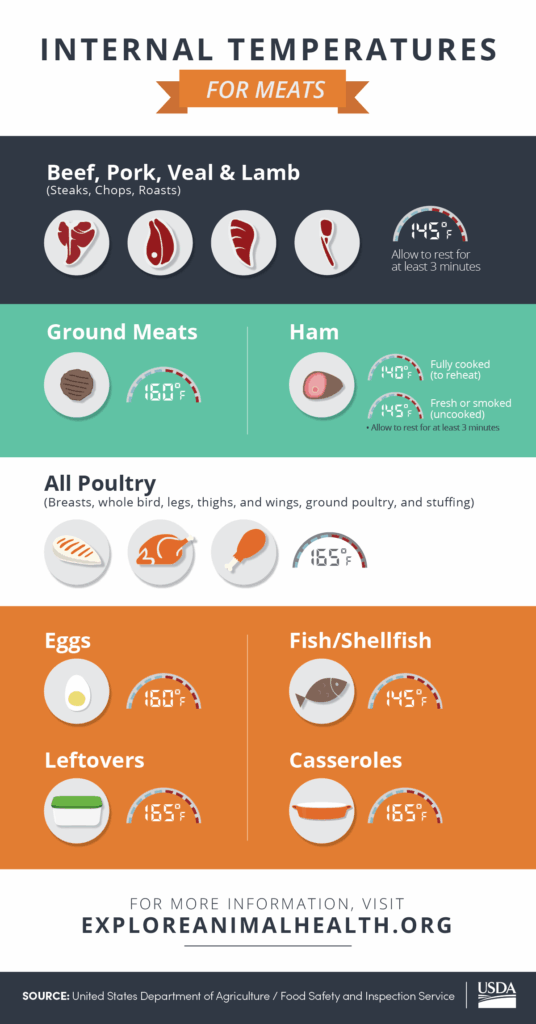Originally posted on November 17, 2016.
At my house, parties, family dinners, and other holiday gatherings are typically centered around food. But holiday cheer can quickly turn to misery if food makes you or others ill. Food safety is a top priority of meat and poultry producers and while many steps are taken to ensure the meat you purchase is safe and wholesome, the ultimate safeguard takes place in home kitchens where food must be properly handled and cooked.
The Federal Meat Inspection Act and the many regulations and directives it has generated over the years ensure that the meat and poultry industry is among the most regulated industries in the nation. Department of Agriculture inspectors are continuously present in meat packing plants and oversee compliance with a wide array of regulatory requirements aimed at making sure the meat you buy is safe.
People who work on farms are often required to complete training in steps that need to be taken to ensure meat is safe. One example is the pork industry’s Pork Quality Assurance Plus training for producers. An audit program makes sure the training is being used and provides consumers greater assurance of the care taken by farmers to improve food safety. And in the processing plant, food manufacturers also use programs to ensure food safety.
But the last line of defense, and an important step, is making sure meat is handled properly and cooked to the right temperature. And that responsibility lies with the people preparing the food for the millions of holiday gatherings that take place in homes across the country, including mine.
The Centers for Disease Control and Prevention provides safety tips to observe as you prepare a stuffed turkey or ham for the holidays. Cooking food to a safe temperature is the best way to ensure safety. When food reaches a safe minimum internal temperature, bacteria that may be lurking are destroyed. The USDA Food Safety and Inspection Service has a guide to safe cooking temperatures for meat, poultry, eggs and seafood. Here is an infographic you can print and keep in your kitchen for easy reference.
Make sure you have a good food thermometer. If you aren’t familiar with them, there are plenty of online videos and guides, such as this one from the USDA.
The U.S. food supply is one of the safest in the world, but according to the CDC some 76 million people get sick from foodborne illness every year. Food safety may not be the first thing you think about when planning a holiday dinner, but it’s really important to keep family gatherings and holiday parties from being memorable in the wrong way.
Here’s wishing you and yours a happy holiday season!
I welcome your thoughts and questions. Please feel free to send me an email at AskDrDorman@pahc.com or call me at 844-288-3623. You can also browse our Resource Library to learn more about this important topic.
Content created in partnership with the U.S. Farmers and Ranchers Alliance.

